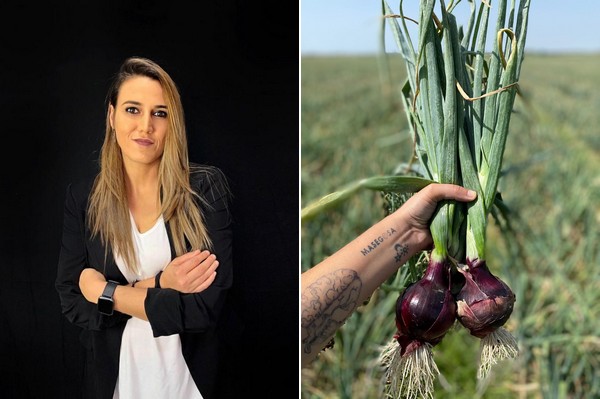The harvest of Medio Grano onions is underway in the Spanish region of Castile-La Mancha. They will be followed by the Grano or Reca onions between the third and fourth week of July. This year, growers are facing a start of the campaign marked by a significant increase in Andalusia’s onion production. According to the latest data from the Spanish Ministry of Agriculture, Fisheries and Food, the acreage devoted to this vegetable has increased by 24.4% compared to 2020. Marian Masegosa, manager of Cebollas Masegosa, says that this supply has been pushing down the prices of La Mancha onions.

“In addition to the increase in the production, the Andalusian campaign has overlapped with that of Castile-La Mancha. Andalusia had about 15 days during which it wasn’t possible to harvest due to the rains and bad weather. This caused the stored varieties to overlap with the new ones from Castile-La Mancha, which started to be harvested about two weeks ago,” she says.
“What customers demand, even in these early stages of the campaign, is a good skin, because the more skin an onion has, the longer it can be kept in storage. That is why producers in Andalusia with more perishable varieties have had to market their goods for very low, almost ridiculous prices, causing the price of onions in general to sink.”
Portugal left a big gap
Andalusia’s greater supply has coincided with a lower than expected demand in Europe, since the food service channel has not yet fully recovered, and there’s also an important customer missing: Portugal. “Portugal has had a larger production of its own and has greatly extended its campaign. Besides, at the beginning of Andalusia’s season onions were imported from third countries, mainly large sizes from Chile and small and medium sizes from New Zealand,” says Marian. “All these factors have caused the market to be in the situation it is at the moment.”

However, in the coming weeks, things could change for the onions from Castile-La Mancha, the main producing region in Spain and one of the most important at European level. “Countries that demand large sizes, such as Germany or the United Kingdom, have already started switching, as Andalusia is not delivering very large onions. Andalusia produces more sizes 4 and 5, suitable for markets such as France or Portugal. Still, everything will depend on what happens in the Netherlands and Poland, where the harvest is in full swing,” says the professional. “Prices are not going to be like last season’s, not by a long shot, but I hope there will be demand.”
New lines and varieties
Cebollas Masegosa is focused on exporting this vegetable, which it ships to destinations across Europe and to various overseas destinations, such as the United Arab Emirates, Canada, Brazil and Colombia. “Ninety percent of our production has normally been intended for export, but during the pandemic we’ve had to focus on less distant markets, targeting mostly Europe and the domestic market. However, this year the situation is looking much better and we want to strengthen our presence in the Arab Emirates area, where Spanish white onions are in great demand,” says Marian. “We are also introducing some lines of garlic products and we are developing pre-prepared convenience food lines of peeled onions. We are also working with supermarkets, as a complement to exports.”

The company works with the whole range of onions; in addition to Medio Grano and Grano onions, it also produces and markets sweet, red and white onions. These varieties “are highly demanded and are keeping market prices higher,” says Marian.

This year, in partnership with Bejo seed house, trials are being carried out with the new Red Hunter variety. “It is a hybrid that has the sweetness of sweet onions and the color of red onions, and it is delicious,” says Marian Masegosa.
For more information:
Marian Masegosa
Cebollas Masegosa
M: +34 628350761
export-import@masegosafrutas.com
cebollasmasegosa.com


